
I walked out of the house the other morning shortly before 4:00 am. The distinctive call of a barred owl greeted me.
“Who cooks for you…who cooks for you all…”
Audubon says that the barred owl is uncommon in central and western Iowa. I’m keeping data on all of the birds that the Merlin sound app identifies during my walk at the Cedar Bluffs Natural Area nearly every morning in Mahaska County. I’ve been doing my walk for years, but only using the Merlin app since April 27 of this year. During this time period, I only heard a barred owl once, on May 15. Let me know if you are interested in getting a copy of the data.
Courtship involves both male and female bobbing and bowing heads, raising wings, and calling while perched close together. Male may feed female in courtship. Members of pair often call in duet. Nest site is in large natural hollow in tree, broken-off snag, or on old nest of hawk, crow, or squirrel. Rarely nests on ground. In east, often uses old Red-shouldered Hawk nest; hawk and owl may use same nest in alternate years.
Most sunrises recently have been muted, in part because of the haze from Canadian wildfires. Not this day.
The vegetation is lush along the stream that is in part filled from runoff from the pond. The stream runs into Cedar Creek just above where Cedar Creek and the Des Moines River converge.
I spent a couple of minutes watching the water flow and listening to the birds. You might also hear Violet the Dog.
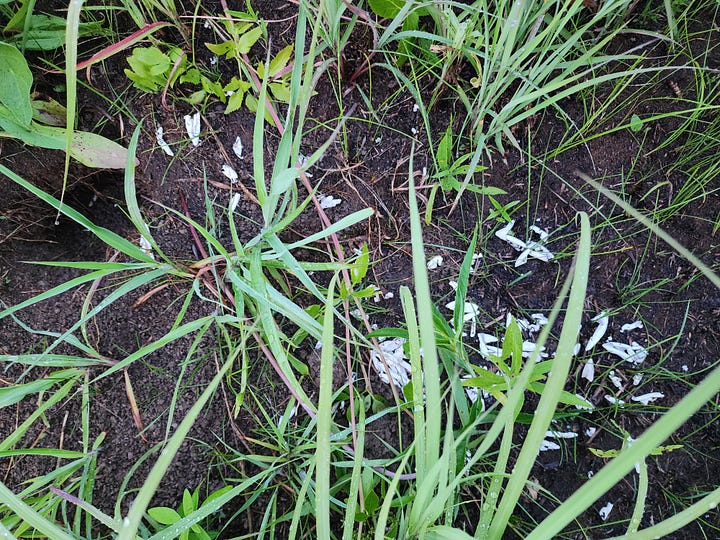

Now here is a puzzle. In the left photo above, to the middle left is an entrance to a burrow about the size of my fist. The white objects are like scraps of thin paper and go into the burrow. Are they something the animal is kicking out as they burrow into the earth? Let us know what they are if you know. Thanks.
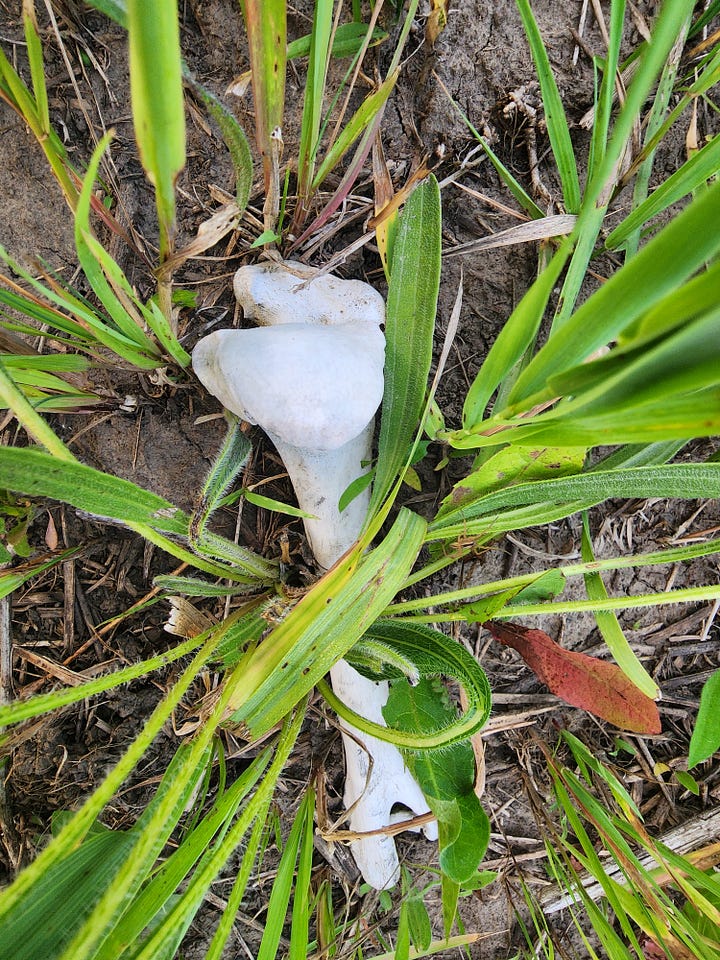
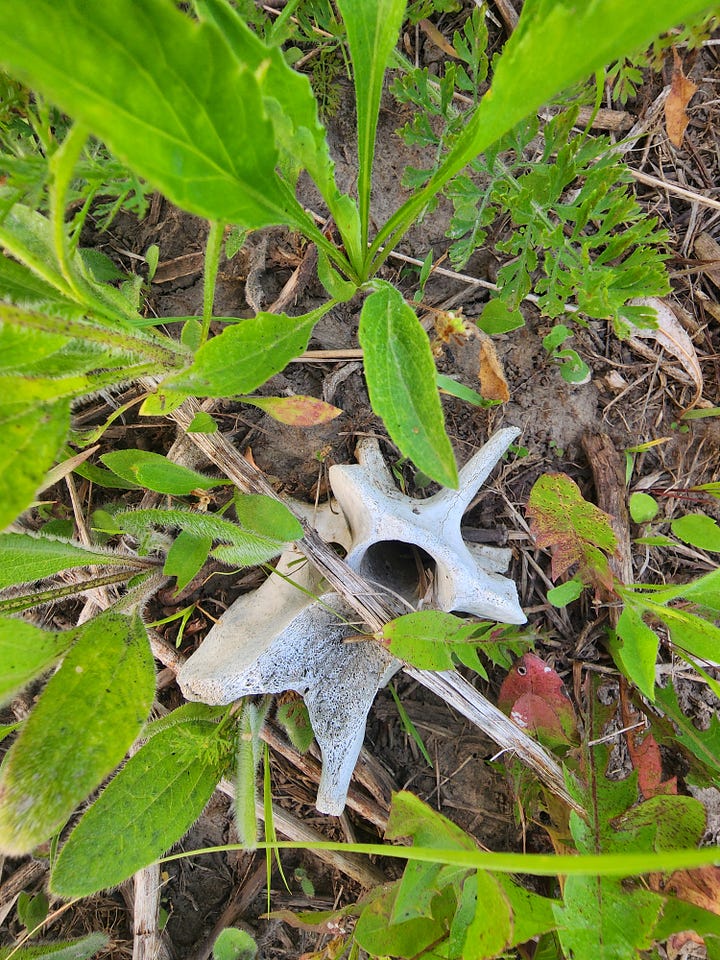
Off the beaten path, I found the skeleton of a young White-Tailed Deer (Odocoileus virginianus).
Below is the sound of the pond at sunrise on Monday.
The three birds you hear in this short clip are the Northern Cardinal, the Common Yellowthroat, and the House Wren.
Here is another mystery (well, almost everything in the woods is a mystery to me). The green plant is moss. Are these moss blooms, or small fungi?
More fungi growing on a felled tree, above.
Please share your thoughts/observations in the comments, and if you enjoy this newsletter, please share it. Let’s learn from each other!
I’m a member of the Iowa Writers Collaborative. Please sample the talents of my fellow collaborative members. If you can afford to be a paid subscriber, that would be great. If not, the vast majority of content is free. And here is a link to the Iowa Podcasters’ Collaborative, should you be interested. Check out my Substack Deep Midwest: Politics and Culture if you aren’t already a subscriber. My Iowa Revolution podcast with award-winning broadcaster Spencer Dirks can be found here.
After retiring from radio, I know a little about public relations, and have started a small consulting group and associated Substack called Better PR. You might be interested in what I have to share there. Thanks!





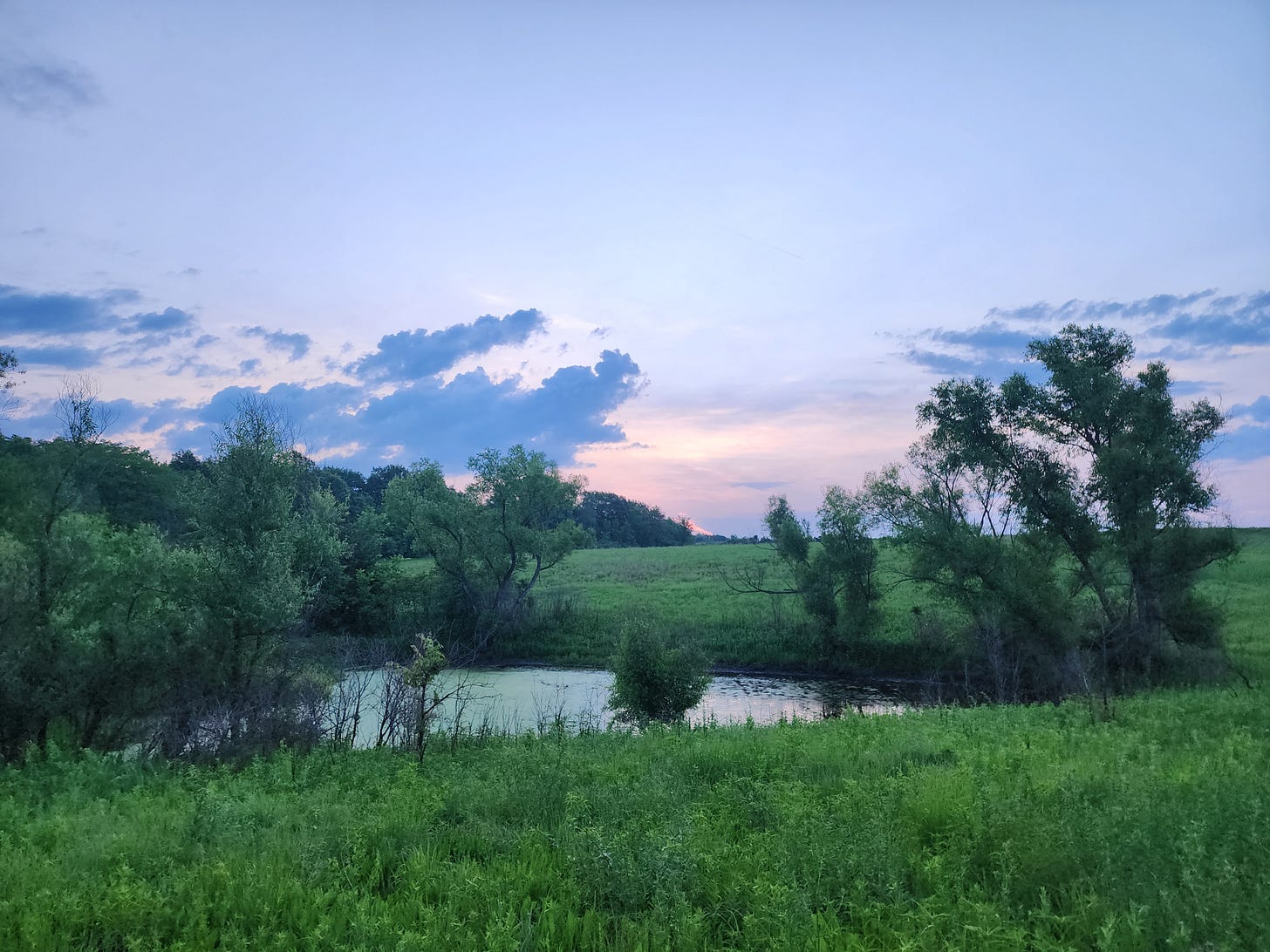

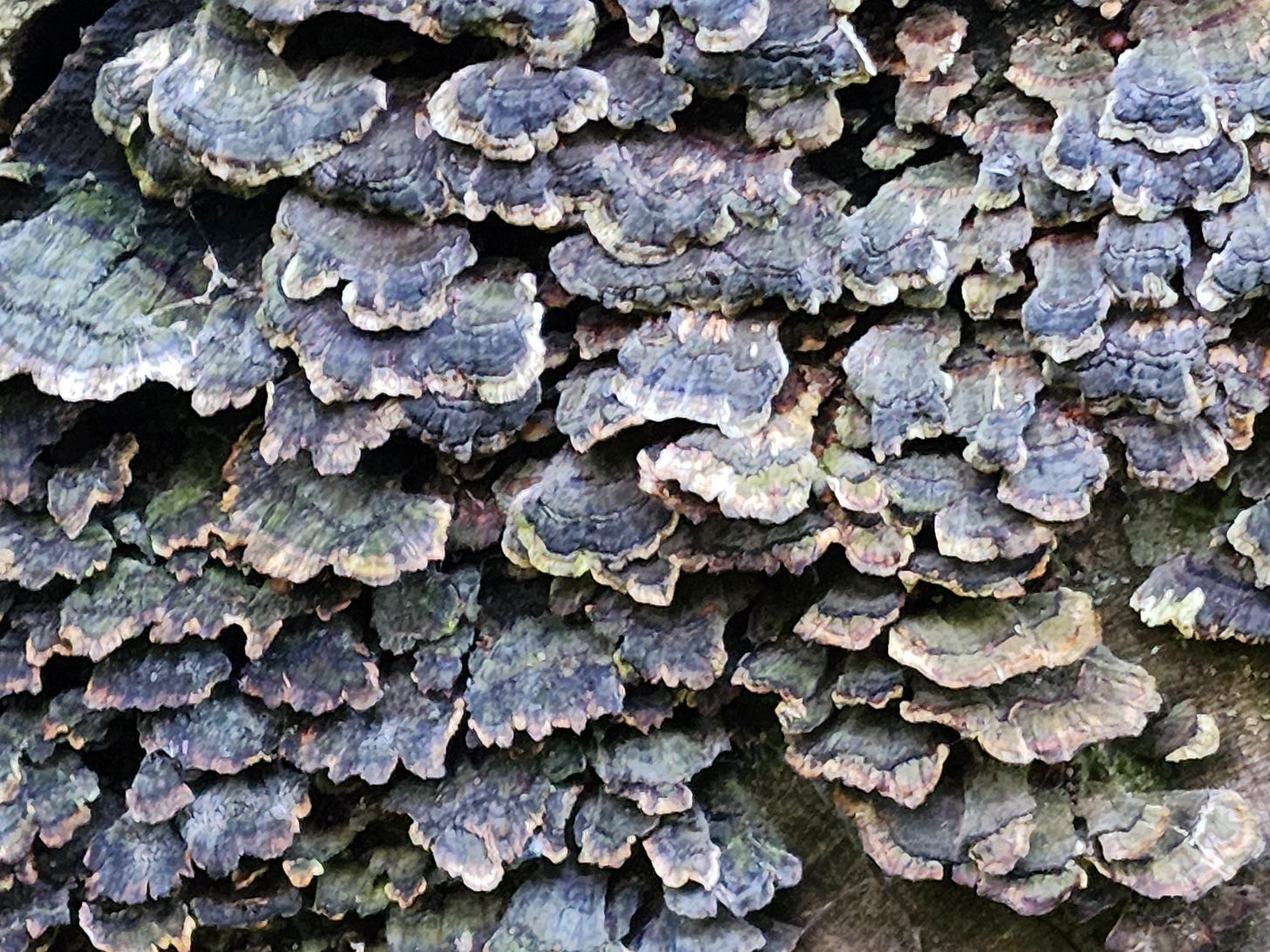
You're right, the small growths next to the moss are fungi. Moss, being seedless nonvascular plants have no flowers (or true leaves or roots either!) and reproduce by spores carried by water droplets.
Hi Bob,
Those white objects are the remains of reptile eggs - probably painted turtle- probably eaten by a raccoon.